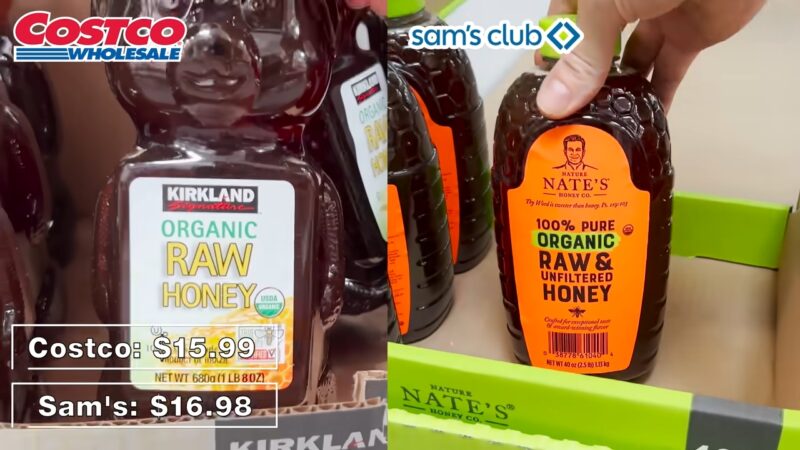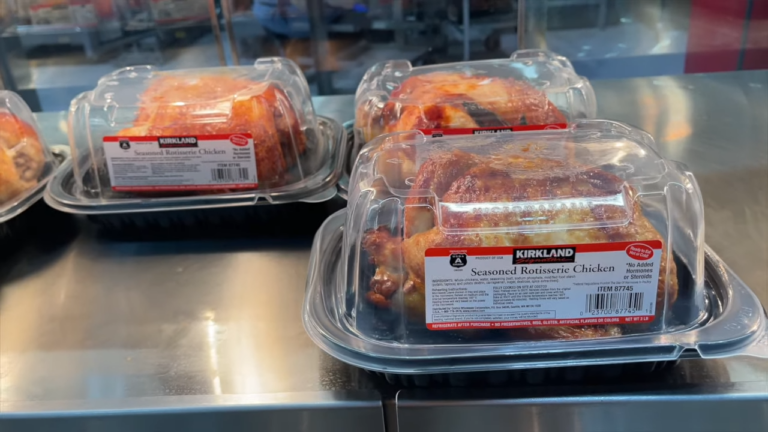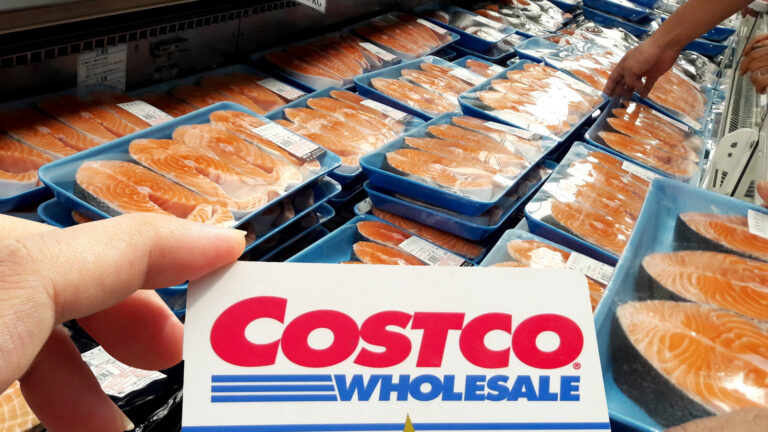I’m known as the “Costco King” at The Kitchn because of my 12-year loyalty to Costco, where I shop at least once a week. Interestingly, I’m within a 30-minute drive of five Costcos. However, before I became devoted to Costco, I was a Sam’s Club member for a year or two.
Recently, hearing friends talk about their favorite Sam’s Club purchases and seeing some news about the store sparked my curiosity. I wanted to compare the two directly, so I decided to revisit Sam’s Club. Before going, I did my homework by researching online, exploring their website and app, and talking to friends.
The outcome is a detailed comparison of Costco and Sam’s Club, looking at membership fees, return policies, store brands, prices, and food courts. I’ve also picked a winner for each category. Let’s start!
Membership Fees and Benefits
Costco offers two membership levels: Gold Star at $60 per year and Executive at $120 per year. Executive members receive a 2% annual reward up to $1,000 and additional benefits.
Sam’s Club also has two membership tiers. The Club membership costs $50 annually, while the Plus membership is $110 and includes the possibility to earn 2% annually up to $500, along with other perks. Sam’s Club occasionally offers discounts on memberships; for instance, I once got mine for just $25, though such deals are temporary.
Both clubs issue two free cards per household. With Sam’s Club, you can use your virtual card to start shopping immediately after joining online. In contrast, Costco requires a photo for their membership cards, which means you need to visit the membership counter to complete your registration. Costco also strictly monitors membership sharing by checking photos at the entrance and register.
Overall, although Costco’s membership is slightly pricier, the higher potential rewards make it a more attractive option for many.
Credit Card Offers
Both Costco and Sam’s Club offer co-branded credit cards that allow cardholders to earn a percentage back on their spending, both in and out of the warehouse, similar to what you might expect from airline or hotel-branded cards.
The Costco Anywhere Visa® Card enables cardholders to earn 4% on eligible gas and electric vehicle charging purchases up to $7,000 per year (about $135 per week), then 1% on amounts exceeding $7,000. Additionally, cardholders earn 3% on restaurant and travel expenses, 2% on purchases at Costco or on Costco.com, and 1% on all other purchases.
The Sam’s Club Mastercard offers up to 5% back on gas for the first $6,000 (then 1% after), 3% back on dining, and 1% on all other purchases. Club members earn 1% back on purchases made at Sam’s Club, while Plus members get 3% back on warehouse purchases.
Takeaway: The credit card offerings from Costco and Sam’s Club provide comparable rewards, making it a tie in this category.
Costco and Sam’s Club Store Brands

Costco’s in-house brand, Kirkland Signature, and Sam’s Club’s Member’s Mark are both known for their quality and affordability. I frequently purchase Kirkland Signature items, which are available across various categories in the warehouse, such as maple syrup, baby wipes, trash bags, and vitamins.
Sam’s Club offers Member’s Mark products throughout their stores as well, but there tends to be a greater focus on national brands compared to Costco. However, Member’s Mark is currently being revamped to enhance sustainability and responsible packaging and to remove ingredients like high-fructose corn syrup and artificial flavors in the next few years.
Both stores also promote their brand spirit through branded clothing available online, with Kirkland Signature and Sam’s Club T-shirts for sale.
Takeaway: It’s a tie between the two store brands. I am still evaluating Member’s Mark against my favorite Kirkland Signature products, but so far, I am satisfied with the offerings from both brand
Warehouse Food Courts

The strategy to draw shoppers and open their wallets might involve a tasty $1.50 hot dog combo, a staple at Costco’s food courts. Sam’s Club offers a similar deal at $1.38.
Both warehouses provide a range of options including ice cream sundaes, pizzas, churros, Caesar salads, and various drinks. Sam’s Club also offers ICEE’s, fruit parfaits, and a pizza pretzel in its cafe. Costco’s menu is broader and varies by location, featuring items such as the chicken bake, new roast beef sandwiches, acai bowls, mango smoothies, and more, depending on the store.
Ordering systems differ as well: Costco uses a kiosk system, while Sam’s Club allows ordering via an app or at the counter. From my experience, Costco’s food courts are generally well-staffed and efficient, whereas at Sam’s Club, ordering can be challenging, as I’ve observed during multiple visits where it was difficult to order food like a whole cheese pizza, and often only one associate was managing both orders and food preparation.
Takeaway: Costco takes the lead in this category due to its efficiency, variety, and overall quality of service and options.
Guarantees and Return Policies
Both Costco and Sam’s Club offer a 100% satisfaction guarantee on memberships and merchandise, allowing customers to cancel their membership and receive a full refund at any time.
For merchandise returns, both clubs accommodate returns of items purchased in-store or online. At Costco, you simply need your membership card for most returns, and the policy is generally no-questions-asked. However, there are exceptions, such as electronics, diamonds over 1.00 carat, cigarettes, and alcohol, which have specific limitations.
Sam’s Club, on the other hand, usually requires the original receipt for returns and reserves the right to limit the number of items a member can return. The timeframe for returns at Sam’s Club is defined as a “reasonable time period,” with the final decision left to the discretion of the local store management.
Takeaway: Although both stores have similar policies, Costco’s approach to easy, receipt-free, and no-questions-asked returns gives it an advantage in this category.
Products that Are Available

Warehouse clubs like Costco and Sam’s Club carry significantly fewer products compared to standard grocery stores, with Costco offering about 4,000 SKUs compared to the 30,000 typically found in grocery stores. Sam’s Club has not disclosed the exact number of SKUs it holds, but they confirmed it’s also fewer than a typical grocery store.
Both Costco and Sam’s Club carry similar product ranges including electronics, cleaning supplies, snack packs, and medicines. However, there are differences in their grocery offerings which might influence your shopping preferences.
- Variety: Sam’s Club has a great selection of prepackaged snacks and beverages, which suits some shoppers, but I found their selection of spices and K-cups lacking (I prefer bulk whole-bean coffee, which was unavailable). Costco’s aisles, while appearing more curated, offer a wider variety in gourmet cheeses, deli items, and dips.
- Brand Quality: Costco tends to stock more premium brands. For example, Ghirardelli brownie mix and Bonne Maman preserves, both winners in The Kitchn Grocery Essentials, are available at Costco but not at Sam’s Club.
- Small and Niche Brands: For those following specific diets like Keto or gluten-free, or those interested in smaller, emerging brands or specialty ingredients, Costco is more likely to meet your needs.
- Organic Items: Costco is the leader in offering a visible range of organic products, especially within its Kirkland Signature line. While Sam’s Club is expanding its organic and sustainable offerings, Costco currently has a broader selection, including organic chicken, tomatoes, and milk.
Takeaway: Although both clubs carry fewer items than traditional grocery stores, Costco wins this category due to its strategic product curation, a wider array of high-quality and organic options, and a boutique-like shopping experience. Costco’s seafood selection further exemplifies its commitment to quality, with a variety of fresh catches that cater to discerning tastes.
Finally
So like I was talking at the beginning, COSTCO WINS!
Hi, I’m George Stewart. I’m 47 years old and a father of two who loves BBQ and French cuisine. On this blog, I share my cooking experiences and favorite recipes. Whether you’re into grilling or gourmet dining, I hope you find something here that inspires your next meal. Welcome and enjoy!













